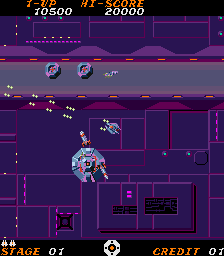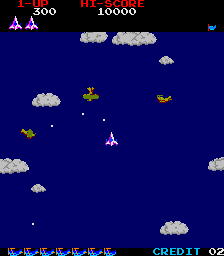

It can be hard to know how much time to schedule for user testing. Find and fix issues with tasks before your study to help ensure a smoother test and stronger results. Tasks that can seem perfectly clear to you and your team can be confusing or misleading to participants.
#TIME PILOT HOW TO#
Any on-the-fly changes run the risk of accidentally giving users clues about how to complete an activity, or making participants feel they did something wrong. The facilitator first needs to realize that the participant didn’t understand the task as it was intended, and then has to spend time redirecting or reinstructing the user. If a user is derailed by a poorly written task, it takes precious time away from studying the interface. Are the materials printed? Consent forms copied? Payment prepared? Site ready and functional? Checklists can help, but running through the study in a low-pressure setting first is a good way to double check that the team is prepared.

It’s a great dry run to make sure the facilitator and team are prepared for the study. Pilot testing is a dress rehearsal for the study. Does every usability study require a pilot test? No, but it’s extra insurance that the study will run smoothly, leaving the team able to focus on the results, rather than the study itself. The longer you work in the field, the better you can get at writing strong tasks and instructions in the first place, but it never hurts to run a test plan past a participant in advance. But if a design project only gets a single dose of user research, you want to get it right the first time, because there won’t be a second time.Įven veteran usability practitioners can benefit from running pilot tests. If you’re doing many rounds of iterative testing, then the damage is limited if you make a few mistakes in the first test. Of course, every usability project is important, but some may be a bit more important than others. Maybe the test is on the company’s premier product.

Maybe the results are going straight to the CEO. Even if you’ve worked in usability for years, there may be the occasional high-visibility project that requires some extra care. As such, a solid script must be created and tested. In such studies, each session needs to be run the same way. Larger scale studies are typically done so that statistically significant results can be calculated. These instructions need to stand on their own, as no one will be there to answer questions or make clarifications if a participant runs into a problem. If you are running a diary study, unmoderated online study, or study conducted via email, all communications, from recruiting information to confirmation emails to study instructions to follow-up questions, should be pilot tested. Any time that study instructions need to stand on their own, they need to be tested to try to limit possibilities for misinterpretation. (Also do work ahead of the study to familiarize yourself with the topics and terminology, for instance by meeting with subject-matter experts as well as designers and developers.) If this is your first test of a site aimed, for example, at rocket scientists or nuclear physicists, and you aren’t an expert in the area, pilot tests can help prepare you. Testing in an unfamiliar subject area.Better to have your first try with a session that you can throw away if needed. Pilot testing is particularly important if you are:
#TIME PILOT FULL#
The point of the test is to test the study itself, running 1–2 sessions to help ensure that the full study goes as smoothly as possible Typically only a small number of sessions are needed to prepare for the full study and make sure everything is in order. In a pilot test, the usability practitioner (and team, if possible) runs through a session or two in advance of the main, scheduled study. Pilot testing can go a long way to alleviating such problems. Session data may need to be thrown away, depending on the severity of the problems. So if users struggle not with your site design, but your study design, it can be difficult to get the necessary results. Small numbers of users can lend great insights into design and usability strengths and weaknesses. When running qualitative usability studies, we often recruit only a handful of users.

You’ve just begun your study and you’re already digging yourself out of a hole, trying to quickly determine how to salvage the session. It’s not a problem with the site design - it’s a problem with the study itself. Only to realize that the participant does not understand what you’re asking him to do. You brief him, explain the session, and dive into the study.


 0 kommentar(er)
0 kommentar(er)
